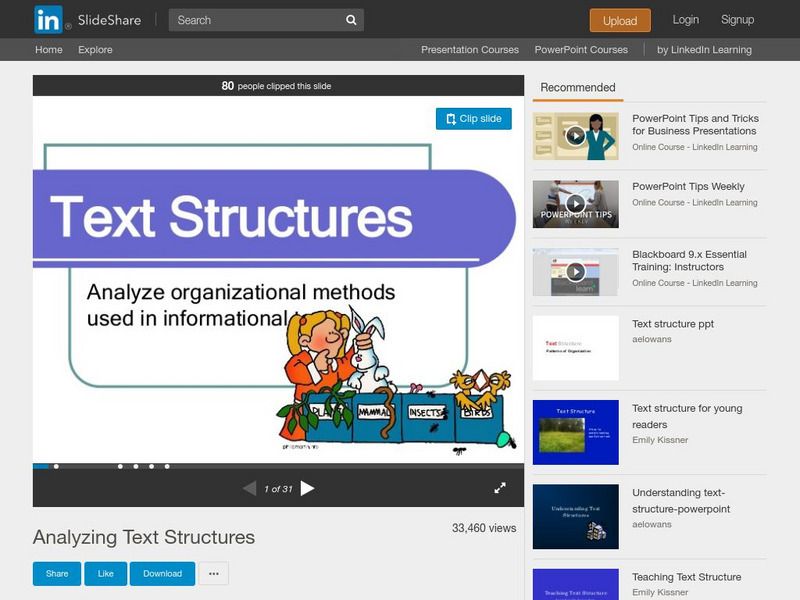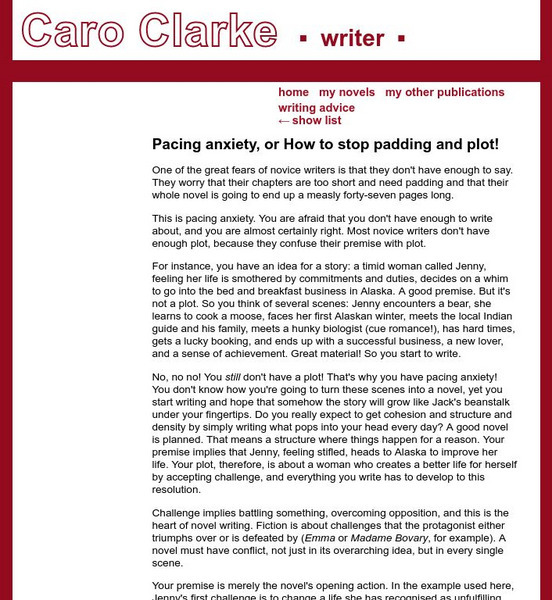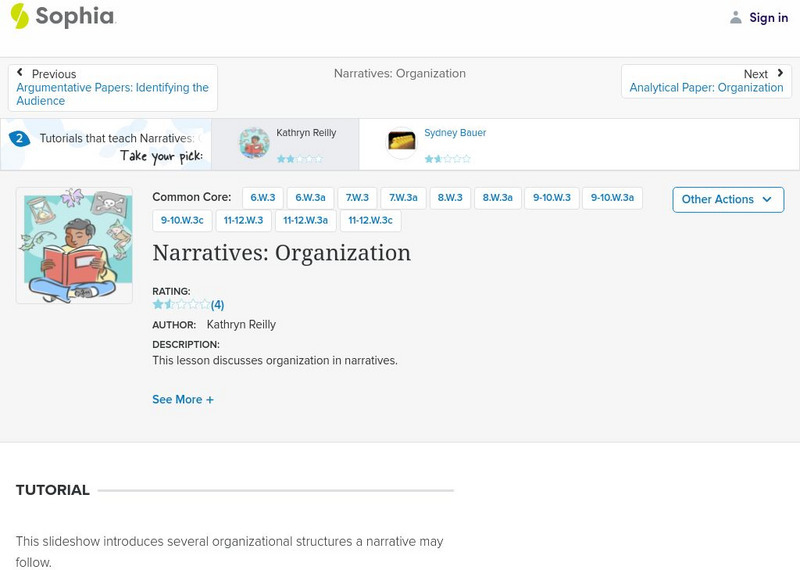PBS
Pbs Learning Media: Out of Proportion
Students are asked to explain how natural disasters affect environmental health.
PBS
Pbs Learning Media: In This Together
Students are asked to explain how a crane's parts work together to achieve the end result.
Ted Nellen
Cyber English (By Ted Nellen): Flashback
This is a glossary entry defining the term "Flashback."
Writing Fix
Writing Fix: 5th Grade Narrative Prompt: School Scenes in "Slow Motion"
This exercise was designed to serve as a pre-writing activity for one of their three designated fifth grade practice prompts for the state writing exam. The prompt is: Think about a time when something special or unusual happened at...
Writing Fix
Writing Fix: Organizing a Story With Purposeful Paragraphs
In this lesson, students organize and design a narrative based on three developing ideas.
Writing Fix
Writing Fix: A Chapter Book Writing Lesson: Creating a Parallel World
Inspired by the opening events in The Subtle Knife by Philip Pullman, students are asked to create an original parallel world that is similar to ours but different in certain ways. They will focus on the similarities and differences...
Writing Fix
Writing Fix: A Chapter Book Writing Lesson: Beyond Once Upon a Time
Learners are so used to hearing stories that start with the words Once upon a time and when writing their own stories, they often begin with these same words or with variations like One day I. Inspired by the novel Crispin by Avi This...
E Reading Worksheets
E Reading Worksheets: Patterns of Organization: Chronological Order
This learning module provides an explanation of the chronological order text structure. An explanation of the chronological text structure is provided, and a video tutorial lesson is provided to supplement this lesson [1:04] Additional...
E Reading Worksheets
E Reading Worksheets: Patterns of Organization: Sequence
This learning module provides an explanation of the text structure for sequence. An explanation of the text structure for a sequence is provided, and chronological order text structure is demonstrated in a video tutorial lesson [1:24]
ReadWriteThink
Read Write Think: Empowered Fiction Writers: Generating and Organizing Ideas
Do your students' minds go blank when they confront a blank piece of paper? Speedwriting can help them get started with writing as well as come up with topics to write about. They can then incorporate their key ideas and phrases into a...
Quia
Quia: Polygon Quiz
In this game, students are to number the steps for making cookies in chronological order to reveal a hidden picture.
ReadWriteThink
Read Write Think: Writing Leads in the Middle School Class
Great lesson plan in which students read various examples of "leads," or attention-grabbing introductions, in literature. Students then contemplate and develop their own interesting "lead" for a short story and share it with the class....
University of Victoria (Canada)
The U Vic Writer's Guide: Literary Term: Point of View
From the University of Victoria's writing tutorial site, this section provides a multiple-paragraph discussion of point of view.
Houghton Mifflin Harcourt
Holt, Rinehart and Winston: Writing a Personal Narrative [Pdf]
A middle school student model of personal narrative writing. Includes a good writing style, examples, and very good notes and annotations as helpful aids for writing success. Points out the introduction, sequence of events and how they...
Writing Fix
Writing Fix: Counting Up or Down Stories
The writer will brainstorm situations where individuals or people in a group count up or count down out loud together. Using the ending of chapter 5 of Wringer by Jerry Spinelli as a model, the writer will plan a story where someone (or...
Grammarly
Grammarly Handbook: Organizing and Developing Your Ideas
A list of four important parts of a writing project with links to additional information on each.
Tom Richey
Slide Share: Text Structures: Analyze Organizational Methods
This slideshow focuses on text structures for informational texts including how the author's purpose helps determine the organizational pattern to use and how the reader can use clues to identify the text structure used. Five...
Caro Clarke
Loving Your Characters Too Much
This article is the fifth in a series that is designed to help new authors with their new novels. This lesson focuses on your main character and what happens when that character lacks character flaws.
Caro Clarke
A, B, and C Characters
This is the ninth article in a series that focuses on helping the new novel author. This article focuses on what the author calls "A, B, and C Characters," used to describe the different levels of characters.
Robin L. Simmons
Grammar Bytes: The Item in a Series
This site is concerned with writing any kinds of items in a series. It verbally and graphically illustrates parallel structure, and shows how to punctuate a series.
Capital Community College Foundation
Guide to Grammar and Writing: Principles of Organization
In writing and reading organization is the key to a reader's understanding. A great site for those of you who are looking for some further explanation of organization in writing. There is instruction, an example text, and specific...
Caro Clarke
Caro Clarke: Pacing Anxiety, or How to Stop Padding and Plot!
This is the seventh installment of a series giving advice to the author who is new to writing novels. This article focuses on how to take your characters and use them and their conflicts to develop the plot of your story. W.9-10.3b...
Sophia Learning
Sophia: Narratives: Organization
This slideshow lesson focuses on organizational structures for narratives including a review of narratives and a list of possible organizational structure types: chronological or sequential order, climactic order, in media, and...
Other
****Story Mapping Strategy
This accessible explanation features a worksheet to help teach students to use story mapping to identify elements of a narrative.





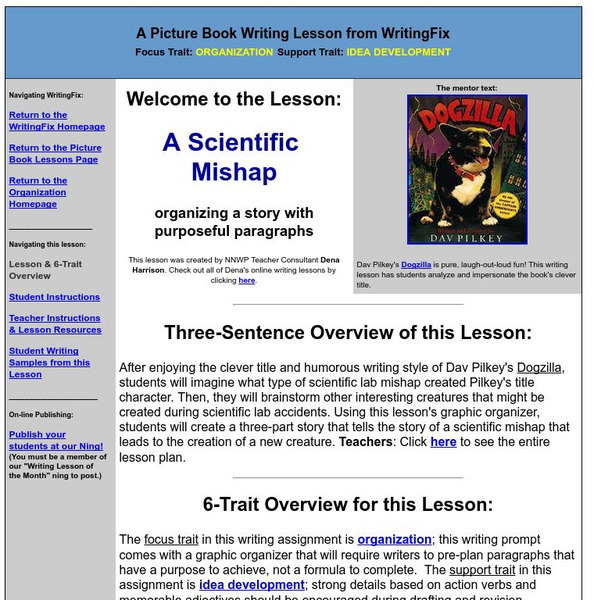


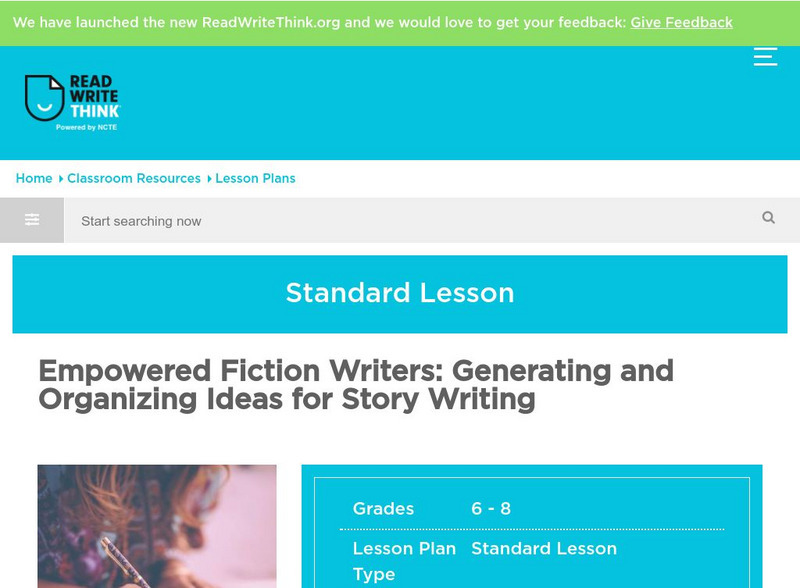


![Holt, Rinehart and Winston: Writing a Personal Narrative [Pdf] Unknown Type Holt, Rinehart and Winston: Writing a Personal Narrative [Pdf] Unknown Type](http://content.lessonplanet.com/resources/thumbnails/410070/large/bwluav9tywdpy2symdiwmduymc0xmtq2ny01njrxbhiuanbn.jpg?1589985236)

